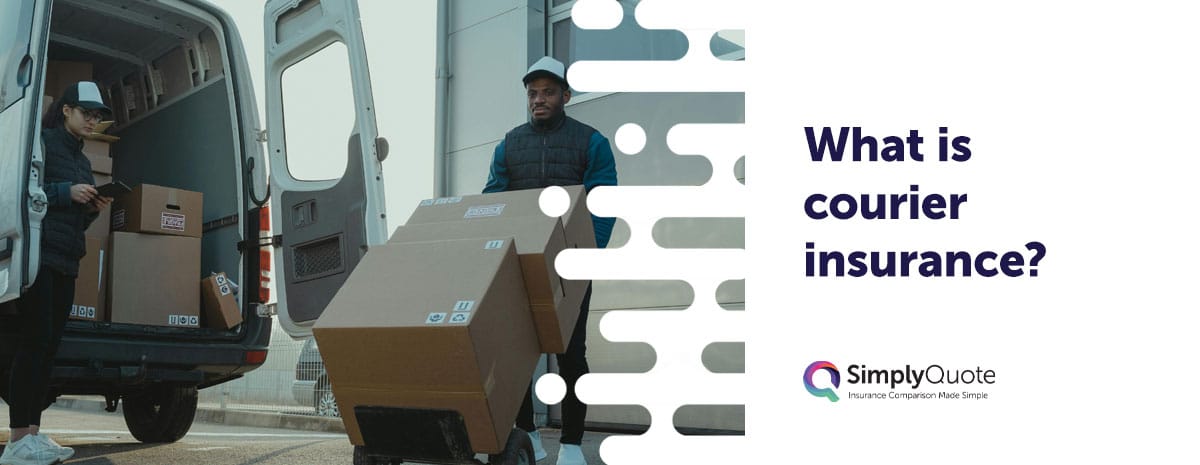What is courier insurance?
Courier insurance is a specialist form of vehicle cover designed for drivers who deliver goods in exchange for payment—whether parcels, food, or freight.
It protects you, your vehicle, and the items you’re transporting while on the job, ensuring you’re covered for the unique risks’ delivery work brings.
Unlike standard car insurance, which only covers personal or commuting use, courier insurance accounts for the reality of commercial driving: long hours on the road, high-mileage stop-start journeys, and regular interaction with both traffic and the public. This exposure carries more risk—and insurers price and structure policies accordingly.
If you’re earning money by delivering anything—via your own business or through platforms like Amazon Flex, Deliveroo, or Just Eat—you’ll need a policy that includes hire and reward use at a minimum. But that’s just the foundation. Many policies also extend to protecting the goods you carry, as well as any third-party claims that arise if you damage property or someone gets injured while you’re on a job.
Courier insurance isn’t just a formality. It’s often the only thing standing between you and a denied claim, cancelled policy, or unexpected legal bill.
This guide explains who needs it, what it includes, how much it costs, and how to make sure you’ve got the right level of cover for your delivery work.

Who needs courier insurance?
Anyone who uses their vehicle to deliver goods in exchange for payment needs courier insurance—whether they’re self-employed, part of a fleet, or working through an app.
It doesn’t matter if you deliver full-time or just a few hours a week. If you’re earning money by carrying items, your personal car insurance isn’t enough.
This includes traditional van drivers and long-haul couriers, but also gig economy workers like food delivery riders, Amazon Flex drivers, and part-time parcel couriers. Even if your vehicle is privately owned and used outside of work, you’ll still need a policy that includes ‘hire and reward’ cover for when you’re on the clock.
It’s a common mistake to assume that standard car insurance will stretch to cover delivery work—it won’t. If you’re in an accident while delivering and haven’t declared the commercial use of your vehicle, your claim could be rejected outright. Worse, you may be driving illegally without realising it.
If you’ve ever loaded your boot with parcels, picked up fast food for Just Eat, or run regular drops for a retailer, you’ve likely crossed into courier territory. In all of those cases, the right insurance isn’t optional—it’s essential.
Looking to compare courier insurance? Get your quote today!
Get QuotesWhat does courier insurance cover?
Courier insurance typically includes multiple layers of protection—covering your vehicle, the items you’re delivering, and potential claims from members of the public.
It’s not a single policy, but rather a combination tailored to how you work.
Here’s what’s commonly included:
- Hire and Reward Insurance: This is the legal foundation. It allows you to carry goods for payment. Without it, you’re uninsured the moment you start a delivery—whether it’s parcels, food, or specialist items.
- Goods in Transit Insurance: Covers the actual goods you’re transporting. If a package is lost, stolen, or damaged en route, this part of the policy steps in—especially important for high-value or time-sensitive deliveries.
- Public Liability Insurance: Essential if you enter homes, offices, or public spaces. It protects you if someone is injured or their property is damaged while you’re working—say, if you knock over a client’s TV or a customer trips over your parcel trolley.
- Employers’ Liability Insurance: A legal requirement if you hire staff, even part-time. It covers injuries or illnesses your employees might suffer in the course of their work.
Some providers also offer extras like legal expenses cover, breakdown assistance, or replacement vehicle hire—but the core four listed above are the backbone of most courier policies.
Every courier’s setup is different. Whether you’re solo with a scooter or managing a small fleet, your policy should match the risks you actually face—not just tick boxes on a form.
How much does courier insurance cost?
Courier insurance in the UK typically costs between £1,200 and £2,500 per year, depending on the level of cover, type of vehicle, and your driving profile.
But pricing isn’t one-size-fits-all—what you pay depends on how, what, and where you deliver.
Here are the main factors that influence cost:
- Vehicle Type & Value: Couriers driving newer vans or vehicles with higher payload capacity often pay more. Insuring a motorbike will usually be cheaper than insuring a panel van doing long-haul work.
- Mileage & Delivery Area: High-mileage drivers or those operating in urban zones with heavy traffic and increased risk (like central London) often face higher premiums.
- Experience & Claims History: If you’re a new driver or have points on your licence, your costs will likely be higher. A clean record helps reduce premiums—sometimes substantially.
- Cover Levels Chosen: Basic hire and reward only? Or fully comprehensive with goods in transit, public liability, and breakdown cover? The broader the protection, the higher the price.
- Working Arrangement: Self-employed drivers managing their own policy may pay more upfront. Those insured under fleet policies or platform arrangements (like Amazon Flex cover bundles) sometimes benefit from bulk-rated pricing.
For reference:
- A food delivery rider using a scooter may pay £600–£900 per year.
- A multi-drop van courier covering a large region might see prices in the £1,800–£2,400 range.
- Adding goods in transit and public liability can push total cover toward £2,800+ annually for higher-risk operators.
The key is not just finding the cheapest policy—but the one that reflects your actual working setup. Underinsuring to save money rarely ends well when claims arise.
How to choose the right courier insurance
Choosing the right courier insurance isn’t just about ticking boxes—it’s about understanding your delivery work and matching your cover to your risks.
The wrong policy can leave you overpaying or under protected. Here’s how to get it right.
Start by reviewing your vehicle use. Are you doing multi-drop deliveries in a van, or short-distance food runs on a scooter? The type of vehicle and frequency of use should determine whether you need comprehensive cover or something lighter.
Next, think about the goods you’re carrying. High-value items (like electronics or medical samples) require more robust goods in transit cover than basic parcel work. If you’re regularly transporting food, check for exclusions on temperature-sensitive or perishable items.
Consider your client or platform requirements. Some delivery apps (like Amazon Flex) may specify minimum cover levels or certain inclusions like public liability. Others may offer group schemes but always read the small print—cheap bundled policies can have surprising gaps.
Now look at your claim exposure. If you enter homes or workplaces, public liability isn’t optional—it’s a safety net. If you have subcontracted help, employers’ liability becomes a legal requirement.
When comparing policies, prioritise:
- Insurers that specialise in courier risk (not just general motor)
- Flexible policy terms that match your workload
- Transparent excesses and exclusions
And don’t assume comparison sites show everything. Many niche or high-value courier policies are only available via brokers or direct providers.
Final thoughts
Courier insurance isn’t just a box to tick—it’s the difference between being properly protected or dangerously exposed while working on the road.
If you’re delivering goods for payment, you’re running a business—whether full-time, part-time, or through a gig app. That means your risks are real, and personal insurance policies won’t cut it. Hire and reward cover is your legal foundation, but it’s rarely the full picture. The goods you carry, the people you meet, and the routes you run all shape the type of protection you actually need.
Good cover doesn’t just pay out after something goes wrong—it helps you keep working, win contracts, and operate without second-guessing yourself. Whether you’re a solo food courier or running a small delivery team, understanding your exposure and building your policy around it is the smartest move you can make.
Frequently Asked Questions (FAQs)
Yes—if you’re delivering goods for payment, you must have hire and reward insurance. Driving without it may invalidate your policy and result in fines.
No. Personal insurance doesn’t cover commercial use. You’ll need courier insurance with hire and reward to drive legally while delivering.
Courier insurance is for multi-stop local deliveries. Haulage insurance is for longer-distance, point-to-point transport with fewer drops.
Yes. If you deliver takeaway food or groceries, even part-time, you’ll need courier insurance to stay legally covered.
Maintain a clean driving record, opt for a telematics policy, limit mileage, and avoid unnecessary add-ons. Paying annually can also reduce cost.
Yes. Some insurers offer short-term hire and reward cover for occasional delivery work—typically from 1 day to 28 days.
Only if goods in transit insurance is included. Without it, you may not be covered for lost or stolen deliveries.
Not always. You’ll usually need to add it separately to protect against claims from members of the public during deliveries.
